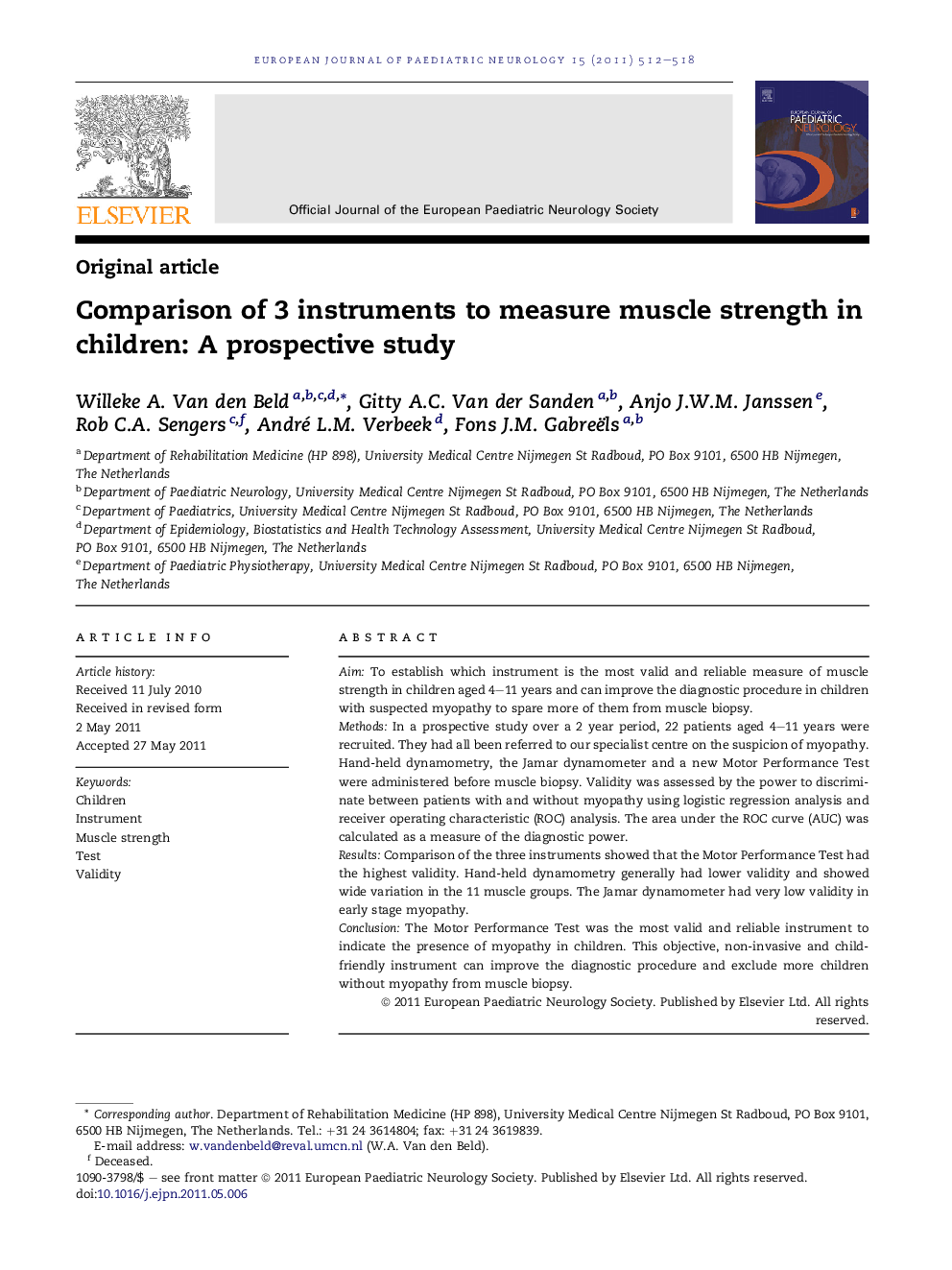| Article ID | Journal | Published Year | Pages | File Type |
|---|---|---|---|---|
| 3054110 | European Journal of Paediatric Neurology | 2011 | 7 Pages |
AimTo establish which instrument is the most valid and reliable measure of muscle strength in children aged 4–11 years and can improve the diagnostic procedure in children with suspected myopathy to spare more of them from muscle biopsy.MethodsIn a prospective study over a 2 year period, 22 patients aged 4–11 years were recruited. They had all been referred to our specialist centre on the suspicion of myopathy. Hand-held dynamometry, the Jamar dynamometer and a new Motor Performance Test were administered before muscle biopsy. Validity was assessed by the power to discriminate between patients with and without myopathy using logistic regression analysis and receiver operating characteristic (ROC) analysis. The area under the ROC curve (AUC) was calculated as a measure of the diagnostic power.ResultsComparison of the three instruments showed that the Motor Performance Test had the highest validity. Hand-held dynamometry generally had lower validity and showed wide variation in the 11 muscle groups. The Jamar dynamometer had very low validity in early stage myopathy.ConclusionThe Motor Performance Test was the most valid and reliable instrument to indicate the presence of myopathy in children. This objective, non-invasive and child-friendly instrument can improve the diagnostic procedure and exclude more children without myopathy from muscle biopsy.
► Three instruments to measure muscle strength were compared in a prospective study. ► Study subjects comprised children aged 4–11 years suspected of having myopathy. ► The Motor Performance Test had the highest diagnostic power. ► The Motor Performance Test can improve the diagnostic procedure. ► More children can be spared from muscle biopsy.
